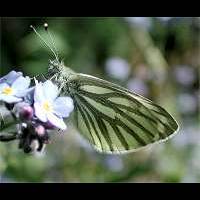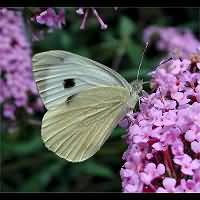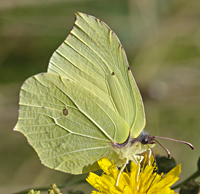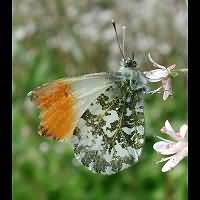This family of butterflies is usually called The Whites. Not all members are white, for some are orange or yellow. The family is very common in the moderate temperature zones of the world. Unlike many other butterflies the whites tend to having only one or two colours and little markings on the wings, making them look much duller than many other butterflies. Most species have a wingspan of some 50 mm, meaning they are about the average size of the butterflies common in gardens in Western Europe. The caterpillars usually are greenish and are hairless or have short hairs only. The pupae are attached by self woven belts to plants, trees or even walls. Some species overwinter as caterpillars, most as pupae. In many species females and males are marked differently and can be told apart easily. The adults of the various generations also differ and can be told apart. The differences can be seen only studying resting or feeding animals. When flying about most whites look identical. The caterpillars of some species live on cabbage. Man took cabbage all over the world, often taking the whites with him. Some species are found world wide nowadays, especially the Large White and the Small White. In agriculture they often are considered a pest, the Large White being the most notorious of them all.
Green-veined White Pieris napi
Also known as the Mustard White, this is the most common White in our garden. More...
Also known as the Mustard White, this is the most common White in our garden. More...
Small White Pieris rapae
Often seen in gardens and parks and about the same size as the one above. More...
Often seen in gardens and parks and about the same size as the one above. More...
Brimstone Gonepteryx rhamni
Sometimes seen on mild days in January or February and one of the first butterflies to appear in springtime. more...
Sometimes seen on mild days in January or February and one of the first butterflies to appear in springtime. more...

© Copyright 1998-2024 gardensafari.net (Hania Berdys)

 English / engels
English / engels  Dutch / nederlands
Dutch / nederlands



